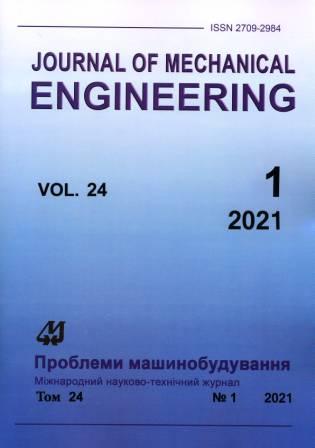Влияние сеточного разрешения на 3D RANS моделирование течений в проточных частях турбомашин
Аннотация
Рассматривается влияние степени измельчения разностной сетки на результаты расчета трехмерных течений вязкого газа в проточных частях турбомашин при использовании моделей течения RANS и численных методов второго порядка. Выполнены расчеты течений для ряда турбинных и компрессорных решеток на последовательно измельчающихся сетках. Использовались сетки типа H с приближенной ортогонализацией ячеек в пограничном слое. Расчеты проводились с помощью CFD решателя F с использованием неявной ENO схемы второго порядка, локального шага по времени и упрощенного многосеточного алгоритма. При расчете течения на мелких сетках применялись: средства ускорения сходимости, реализованные в решателе; усечение расчетной области с последующим распространением результатов на основе свойства симметрии; разбиение расчетной области на части и распараллеливание вычислений. Проведено сопоставление полученных результатов как по качественному разрешению сложной структуры трехмерных потоков, так и по количественной оценке потерь. Сеточная сходимость оценивалась двумя способами. В первом из них визуально сравнивались характерные двухмерные распределения параметров, полученные на разных сетках. Целью таких сравнений было оценить достаточную степень решения как общей структуры течения в решетках, так и его особенностей, а именно, скачков уплотнения, контактных разрывов, отрывных зон, следов и пр. Второй способ оценки основывался на индексе сеточной сходимости (GCI). GCI может быть определен не только для интегральных характеристик течения, таких, как потери, силы и т. д., но и для трехмерных полей газодинамических параметров, в частности рассматривался GCI, рассчитанный по трехмерному полю плотности. Сделан вывод, что для научных исследований, требующих высокой точности расчетов и детализации структуры трехмерного течения, нужны очень мелкие разностные сетки, с количеством ячеек от 106 до 108 в одном межлопаточном канале, в то время как для инженерных расчетов, при выполнении некоторых условий, достаточно сеток с количеством ячеек менее 1 млн в одном межлопаточном канале.
Загрузки
Опубликован
Выпуск
Раздел
Лицензия
Copyright (c) 2021 Сергей Ершов, В. А. Яковлев

Это произведение доступно по лицензии Creative Commons «Attribution-NoDerivatives» («Атрибуция — Без производных произведений») 4.0 Всемирная.
Авторы, публикующиеся в этом журнале, соглашаются со следующими условиями:
- Авторы оставляют за собой право на авторство своей работы и передают журналу право первой публикации этой работы на условиях лицензионного договора (соглашения).
- Авторы имеют право заключать самостоятельно дополнительные договора (соглашения) о неэксклюзивном распространении работы в том виде, в котором она была опубликована этим журналом (например, размещать работу в электронном хранилище учреждения или публиковать в составе монографии), при условии сохранения ссылки на первую публикацию работы в этом журнале.
- Политика журнала позволяет размещение авторами в сети Интернет (например, в хранилищах учреждения или на персональных веб-сайтах) рукописи работы, как до подачи этой рукописи в редакцию, так и во время ее редакционной обработки, поскольку это способствует возникновению продуктивной научной дискуссии и позитивно отражается на оперативности и динамике цитирования опубликованной работы (см. The Effect of Open Access).

